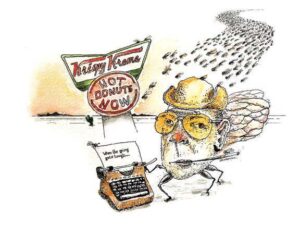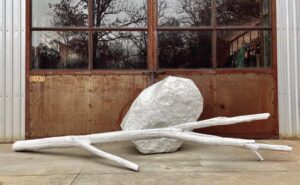
Neighbors to the North
Virginia wines come into their own
By Angela Sanchez
When driving through the rolling hills outside of Charlottesville, Virginia, you see beautiful farmland with wineries, cider houses and breweries. Tucked away in Central Virginia, these places have breathtaking views and lovely, preserved agricultural spaces. It’s where Thomas Jefferson worked voraciously to grow French wine varietals in the fields of Monticello, his plantation home.
Full of American history and family-owned farms, minutes away from cities, colleges and culture, this area boasts a thriving wine industry. It’s only fitting that today Central Virginia is on the map for winemaking and viticulture. Once considered mediocre, at best, today the wines are worth a closer look.
While Virginia is broken into numerous growing districts, Central Virginia is the most interesting. Encompassing Albemarle and Nelson counties — a short drive from Charlottesville, minutes from Wintergreen ski park in the Appalachian Mountains and an hour-and-a-half from Richmond — the area is beautiful, accessible, and capable of producing wines on par with those of America’s more heralded wine regions.
The Central Virginia growing district encompasses the Monticello AVA (American Viticultural Area), named for Jefferson’s home. A well-know Francophile when it came to all things wine, Jefferson not only collected French wines but toiled over French varietals in his own vineyards, trying to find the right “fit” for the land.
Today, the land has decided. Granite-based clay soil is very fertile, and provides the structure behind the beautiful wines produced there. Lesser-known French varietals have taken hold. Viognier, cabernet Franc and petit verdot have grown, adapted, and are thriving in the rich soil, continental climate and the extended growing season of over 200 days a year. As of late, better-known varietals like cabernet sauvignon and chardonnay are shining, too.
At most of the wineries you will find Bordeaux-style blends leading the tastings as favorites, lending an “expression of place” that is uniquely Central Virginia. The wines are structured with a restrained power that allows the balance and fruit character to shine. Some have great aging potential, though most producers are making wines that can, and should, be enjoyed young. Whites and rosés are aromatic and, at their best, show notes of minerality. The growers and vintners have developed wines of style based on their place, soil, climate — terroir, if you will — rather than emulating other growing areas. Working with what the land gives them has added greatly to the success of the region, what Virginiawine.org calls “pushing back against a tyranny of sameness.”
The wineries of the Central Virginia growing district are beautiful, like the landscape they occupy. The fertile, green, rolling hills, undeveloped farmland and the backdrop of the Blue Ridge Mountains make for idyllic production. Some of the wineries are stately, some modern farmhouses, all offering their unique expression of place, and all accommodating. A few offer full menus while others just showcase their wines, allowing you to bring in food. Most are kid-friendly, and all are couple- and friend-friendly. A large majority are family-owned, and a few are owned by famous faces.
Flying Fox Vineyard, a family-owned winery that not only makes amazing wines but has introduced a line of outstanding vermouths, is one of my favorites. Others include Pippin Vineyards, with a full restaurant and culinary gardens; Pollack Vineyards, with a beautiful tasting room and big lush wines; and Blenheim Vineyards (owned by rock star Dave Matthews), with gorgeous views, picnic areas and a glass floor in the tasting room that shows off the winery. All are easy to get to and open every day of the year except Christmas.
The reds and whites produced by these wineries are balanced, generous and a great bang for the buck. I like to pair the wines with cheese produced in Virginia, too. Try one of the signature red Bordeaux-style blends of cabernet, merlot, petit verdot and syrah from Blenheim with cheese from Meadow Creek Dairy. Appalachian, a tomme-style cheese with a rich, yellow hue and deep nutty and grassy flavor from the grazing herds, pairs well with a crisp, fruit forward rosé from Pippin Vineyards.
Beautiful farmland, wines distinct to place, and the roots of America’s history are a day trip away. PS
Angela Sanchez owns Southern Whey, a cheese-centric specialty food store in Southern Pines, with her husband, Chris Abbey. She was in the wine industry for 20 years and lucky enough to travel the world drinking wine and eating cheese.





